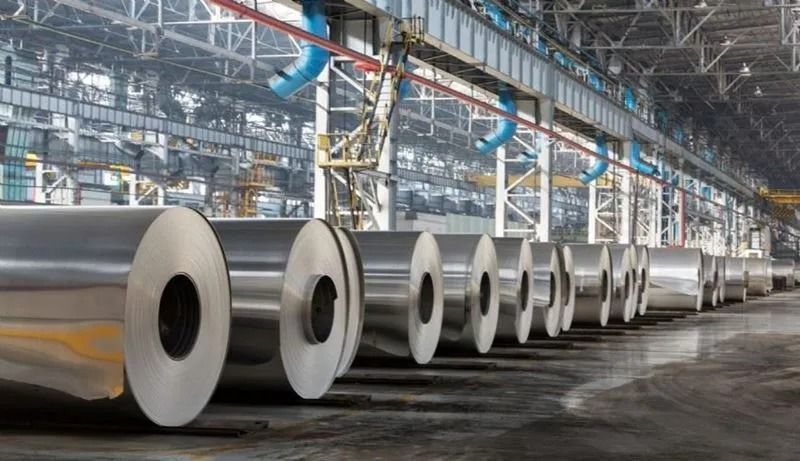New Delhi | 1st November 2025| SKY LINK TIMES
India Targets 300 MT Steel Capacity:
India has set an ambitious target to achieve 300 million tonnes of crude steel production capacity by 2030, Union Minister of State for Steel Bhupathiraju Srinivas Varma announced on Friday. The announcement came during a meeting in New Delhi with Sara Modig, State Secretary to the Swedish Minister for Energy, Business and Industry, in the presence of Swedish Ambassador Jan Thesleff and other officials.

The discussions focused on strengthening bilateral cooperation in green steel production, advanced research, and sustainable manufacturing technologies — key areas in India’s journey toward becoming a global steel powerhouse.
Table of Contents
India’s Steel Sector on a Growth Trajectory
According to the Ministry of Steel, domestic demand for steel in India is currently growing at an impressive 11–13% annually, driven largely by massive infrastructure projects, urban development, and housing initiatives under the Gati Shakti and Smart Cities missions.
In stark contrast, global steel demand has shown signs of slowdown, highlighting India’s position as one of the few bright spots in global steel consumption.
Green Steel and Global Collaboration
During the meeting, both sides explored opportunities for joint R&D projects focused on decarbonizing steel production and reducing industrial emissions. India’s initiative aligns with global sustainability goals and its commitment to achieving net-zero carbon emissions by 2070.
Minister Varma also invited Sweden to participate in “Bharat Steel 2026,” an international steel industry exhibition and conference scheduled for April 16–17, 2026, at Bharat Mandapam, New Delhi.
Strong Production Growth and MSME Contribution
Recent data from the Commerce and Industry Ministry shows that India’s steel production surged 14.1% in September 2025, compared to the same month last year. The cumulative growth rate between April and September 2025–26 stood at 11% year-on-year.
Notably, secondary steel plants and MSMEs play a crucial role in this expansion. As per the Joint Plant Committee (JPC), MSMEs accounted for 47% of the total crude steel capacity (94.42 million tonnes out of 200.3 million tonnes) in 2024–25, underscoring their significant contribution to the sector’s overall strength.
Also Read:https://skylinktimes.in/rbi-returns-jana-small-finance-bank-licence/
Government Support and Policy Measures
The steel sector in India is de-regulated, with the government acting as a facilitator to create a conducive policy environment. Key initiatives supporting the industry include:
1.Domestically Manufactured Iron & Steel Products (DMI&SP) Policy promoting ‘Made in India’ steel for government procurement.
2.Production Linked Incentive (PLI) Scheme for Specialty Steel to attract investment and boost high-grade steel manufacturing.
3.Revamped Steel Import Monitoring System (SIMS) for detailed tracking of imports and enhancing transparency.
4.Steel Quality Control Orders banning substandard steel to ensure availability of quality material for industries and infrastructure.
5.A 12% safeguard duty on specific steel imports imposed in April 2025 to protect domestic producers.
These steps are part of the government’s broader push for self-reliance under the “Atmanirbhar Bharat” and “Make in India” initiatives.
India’s Roadmap to 2030
With a booming domestic market, proactive policy reforms, and growing international partnerships, India is well-positioned to become the world’s second-largest steel producer by 2030. The focus on green steel technologies will not only enhance production capacity but also ensure environmental sustainability in the long term.
As Minister Varma emphasized, “India’s steel story is one of growth, innovation, and global collaboration — setting new benchmarks for sustainable industrial progress.”
For More Info Stay Tuned: https://skylinktimes.in



